Grey iron castings, also known as gray iron castings, are iron-carbon alloyed parts produced in foundries, not to be confused with forges. Inside foundries, gray iron material is cast and formed via closed mold operations for applications in a wide range of industries. Read More…
At Hallman Foundry, we specialize in the production of high-quality grey iron castings, bringing precision, consistency, and strength to each component we create. With decades of experience in foundry operations, we understand the unique properties of grey iron and harness our expertise to deliver castings that are both durable and meticulously crafted.

For over a century Lemfco has been a family business and leading manufacturer of high-quality grey iron castings. We pride ourselves on our extensive list of products and patterns available for our customers. Lemfco is committed to creating the best gray iron castings for our customers to fit all of their needs. Our company has changed throughout the years, but our commitment to quality never has.
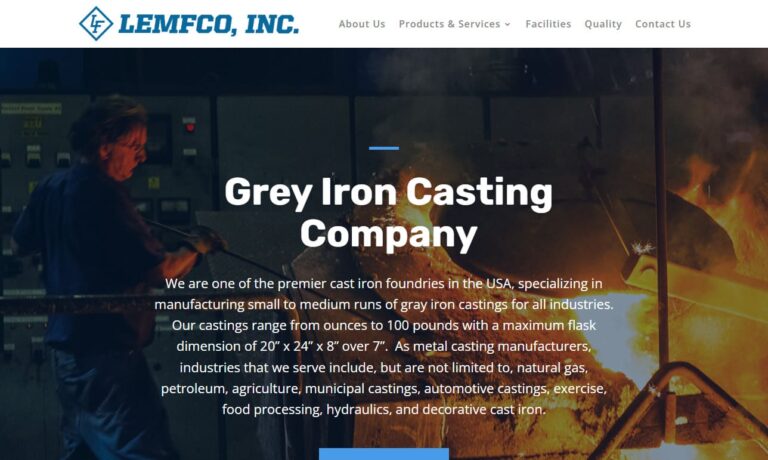
Our gray iron castings are second to none. These high performance items are pre-tested for maximum customer satisfaction. We have a component staff that can easily handle your requests. Turn to Interstate Castings for the best gray iron castings. You will not be upset with the quality of items you receive. We look forward to working with your business. Give us a call today!

At Hiler Industries, we present ourselves as dedicated manufacturers of grey iron castings engineered to deliver strength, consistency, and long-term reliability for demanding industrial applications. We work with carefully controlled melt processes, high-quality raw materials, and disciplined foundry practices to produce castings that maintain uniform microstructure, predictable mechanical...

At St. Marys Foundry, Inc., we take immense pride in our longstanding tradition of crafting exceptional grey iron castings. With years of experience under our collective belt, we are renowned for our commitment to quality and precision in the production of these castings. Our products are a testament to our dedication to excellence. We specialize in the creation of grey iron castings that serve a ...
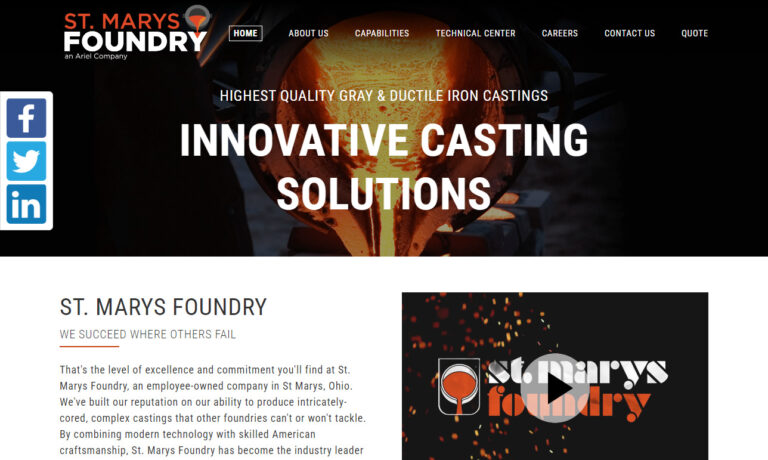
More Grey Iron Casting Companies
Grey iron castings, also known as gray iron castings, are a core component in global manufacturing and engineering, valued for their exceptional mechanical properties and cost-effectiveness. These castings serve a critical role across a wide range of industries, including agriculture, architecture, automotive, construction, electronics, irrigation, heavy equipment, machinery manufacturing, transportation, and ventilation systems. Their adaptability makes them a top choice for both high-volume industrial production and custom casting projects.
Understanding Grey Iron Castings: Properties and Applications
What are grey iron castings used for? Grey iron, sometimes referred to as cast iron or gray cast iron, is renowned for its durability, hardness, compressive strength, and vibration-dampening abilities. These characteristics enable grey iron components to withstand intense operational environments, resist wear and deformation, and maintain long-term structural integrity.
One of the most distinctive features of grey iron castings is their energy dissipation capability, thanks to the graphite flakes present in their microstructure. This property is particularly vital in applications where vibration dampening is essential, such as in engine blocks, crankshafts, machinery bases, and compressor housings. Additionally, as a non-flammable material, grey iron offers superior fire resistance compared to alternative building materials, making it ideal for fireproof architectural components and safety-critical infrastructure.
Key Applications of Grey Iron Castings
- Automotive Industry: Engine blocks, cylinder heads, brake drums, and manifolds benefit from grey iron’s thermal conductivity, strength, and vibration control.
- Construction & Architecture: Structural columns, decorative panels, balustrades, and staircases leverage cast iron for both its load-bearing capacity and intricate design possibilities.
- Agricultural Equipment: Housings, frames, and parts for tractors and harvesters rely on the material’s resistance to impact and wear.
- Industrial Machinery: Machine beds, gearboxes, dies, and heavy-duty housings utilize grey iron for its stability under load and precise machining capabilities.
- Piping and Fluid Handling: Grey iron pipes, pump housings, and valves are prized for their dimensional stability, corrosion resistance, and pressure-handling capabilities in water, oil, and chemical transport.
- Cookware: Cast iron pans, pots, and Dutch ovens remain favorites for their superior heat retention, even cooking, and legacy quality.
- Ornamental and Decorative Uses: Fencing, lamp posts, benches, and facades showcase the material’s ability to capture fine details and endure outdoor conditions.
Are you searching for a grey iron casting supplier for your specific project? Browse our curated list of reputable grey iron foundries and casting manufacturers or continue reading to learn what factors to consider when evaluating potential partners.
Products Produced from Grey Iron
Grey iron casting enables the production of a vast array of components, serving diverse and demanding industries. Here are some of the most common and mission-critical products made using this casting process:
- Valves and Fittings: With their high strength and excellent wear resistance, grey iron valves and fittings are widely used in municipal water systems, oil & gas pipelines, and chemical plants.
- Cases and Engine Blocks: Superior thermal conductivity and structural stability make grey iron the material of choice for engine blocks, gearbox housings, and compressor shells.
- Pump Housings: Grey iron’s resistance to corrosion and dimensional deformation ensures long-lasting performance in fluid transport and industrial pumping systems.
- Pipes: Cast iron pipes efficiently transport water, sewage, and industrial fluids, offering reliability and longevity under high pressure and variable temperatures.
- Brake Drums and Rotors: The heat-dissipating properties of grey iron contribute to safer, more effective braking systems in automotive and heavy machinery applications.
- Dies and Molds: The material’s ability to withstand repetitive mechanical stress and maintain precise dimensions makes it ideal for forming dies and molds used in metalworking and plastic injection molding.
- Cookware: Grey cast iron cookware is favored by chefs for its ability to retain and evenly distribute heat, ensuring consistent cooking results and imparting unique flavors.
- Decorative Embellishments: The intricate detail achievable with grey iron casting makes it an excellent option for architectural features, sculptures, and restoration projects.
Looking to source custom grey iron castings for your next project? Contact our recommended foundries to request a quote, discuss engineering support, or learn about material selection for demanding environments.
The History of Grey Iron Casting: From Ancient Innovation to Modern Industry
Grey iron is the oldest type of cast iron, with a heritage tracing back to ancient China around the 5th century BC. Early uses included weapons, tools, and agricultural implements. The widespread adoption of malleable iron casting between the 9th and 4th centuries BC transformed manufacturing capabilities, allowing for stronger and more versatile iron products. Chinese innovations in casting technology gradually spread westward, but it wasn’t until the 15th century AD that Western Europe embraced iron casting for military and architectural applications—most notably for producing cannons for the British Royal Navy under King Henry VIII.
Abraham Darby’s breakthrough in 1707—developing thinner-walled cast iron pots—marked a turning point, paving the way for innovations in cookware, architectural elements, and military gear. James Watt’s improvements to the steam engine in the 1770s further advanced grey iron casting, making it possible to produce more precise and robust engine components. Throughout the 18th and 19th centuries, grey iron played a pivotal role in the construction of bridges, mills, and manufacturing equipment, especially before the rise of commercial steel production.
Did you know? By 1967, annual global production of grey iron castings reached more than 14 million tons, dwarfing all other cast metals combined. Even in the modern era, grey iron remains a foundational material due to its balance of performance, machinability, and cost.
Recent decades have seen major advances in manufacturing technology for grey iron castings, including more precise dimensional control, improved thin-section casting, and innovative surface treatments that reduce the need for post-casting finishing. Ongoing research continues to push the boundaries of strength, energy dissipation, and cost efficiency, ensuring grey iron’s ongoing relevance for the future of manufacturing.
Materials Used in Grey Iron Casting
Grey cast iron is primarily composed of iron (about 95% by weight), with critical additions of silicon (1%–3%) and carbon (2.1%–4%). These carbon and silicon levels are carefully controlled to produce the signature graphite flakes that give grey iron its distinctive color, fracture pattern, and mechanical properties.
The graphite flakes formed during solidification are responsible for grey iron’s high vibration damping, thermal conductivity, and machinability. When fractured, grey iron reveals a gray, flake-like structure under a microscope, which also helps absorb stress and reduce noise in finished parts. The carbon content directly affects tensile strength and hardness; higher carbon levels generally increase these properties, though at the expense of some ductility. Silicon content promotes the formation of free graphite during cooling, further enhancing machinability and heat resistance.
Grey iron alloys may also include trace elements such as manganese (which encourages a pearlitic microstructure for added strength), sulfur (which can increase hardness), and phosphorus (which can improve fluidity for casting complex shapes). The exact alloy composition can be tailored to meet specific performance demands, including wear resistance, machinability, and cost.
Grey Iron Casting Process Details
- Raw Material Preparation: Grey iron production begins with the mining of iron ores or the recycling of iron-rich scrap. These materials are processed in high-temperature blast furnaces, such as electric induction furnaces or cupolas, to achieve the desired melt composition.
- Melting and Alloying: The iron is melted and alloyed with carbon, silicon, and other elements to achieve target mechanical properties, ensuring consistency and performance in the final castings.
- Casting: The molten grey iron is poured into molds, which may be made from sand, metal, or other refractory materials, depending on the casting process. After pouring, the metal solidifies and cools, taking the shape of the mold cavity. This step determines the overall geometry, internal features, and surface finish of the final product.
- Secondary Processing: Once the casting has cooled, it is removed from the mold and undergoes finishing operations such as deburring, annealing, heat treating, machining, galvanizing, painting, or coating. Modern iron foundries often combine advanced automation with skilled labor to optimize quality, repeatability, and turnaround time.
Looking for a step-by-step guide to the grey iron casting process? Click here for detailed process explanations and expert tips or reach out to our partner foundries for technical support.
Design Considerations for Grey Iron Castings
How do you design for optimal grey iron casting performance? Engineers and manufacturers must consider a range of factors to ensure the cast component meets all operational and quality requirements:
- Material Selection: Grey iron grades are classified according to ASTM standards, which specify mechanical properties such as tensile strength, hardness, and ductility. Selecting the right grade is crucial for balancing performance, cost, and ease of manufacturing.
- Casting Process Selection: The choice between sand casting, die casting, or centrifugal casting depends on the part’s geometry, size, required surface finish, and production volume.
- Wall Thickness and Dimensional Accuracy: Thicker sections may require slower cooling to avoid internal stresses, while thin-walled castings benefit from faster solidification and improved dimensional control.
- Core Design and Internal Features: Custom core inserts or complex mold designs can be used to create hollow sections, undercuts, and other internal geometries.
- Budget and Production Timeline: Early collaboration with your chosen foundry can help optimize cost, reduce lead time, and ensure manufacturability of complex or custom designs.
Need design assistance for your custom grey iron casting? Request engineering consultation or download our free design checklist for grey iron castings.
Machinery and Equipment Used in Grey Iron Foundries
Modern grey iron foundries utilize a wide array of specialized equipment to deliver high-quality castings at scale:
- Furnaces: Electric induction furnaces and cupola furnaces are the primary melting units, capable of precisely controlling melt chemistry and temperature.
- Molds and Cores: Molds are made from sand, metal, or composite materials, shaped to define the external and internal geometry of the casting. Cores are inserted to create voids or complex internal passages.
- Die Casting Machines: For high-volume or precision applications, die casting machines utilize reusable steel dies to rapidly produce uniform components.
- Gating and Feeding Systems: These direct the flow of molten iron into molds, minimizing turbulence and ensuring complete filling without defects.
- Finishing Equipment: CNC machines, grinders, shot blasters, and painting/coating stations are used to deliver a finished product that meets all dimensional and surface quality requirements.
Curious about which manufacturing technologies or machinery best suit your application? Ask our experts or explore our iron foundry listings for more information.
Types of Grey Iron Casting Processes: Variations and Similar Methods
Grey iron casting can be performed using several different processes, each suited to specific applications, part geometries, and production volumes:
- Centrifugal Casting: Ideal for producing cylindrical parts (such as pipes, rings, and sleeves) with fine-grained, dense outer walls. This process involves spinning a mold at high speed while pouring molten grey iron, ensuring superior consistency and mechanical properties.
- Die Casting: Well-suited for high-volume production of small- to medium-sized parts with intricate details and excellent surface finish. Die casting uses reusable steel dies and applies high pressure to inject molten iron into the mold, resulting in minimal porosity and high dimensional accuracy.
- Sand Casting: The most versatile and economical method for both prototyping and large-scale production. Sand molds (no bake, dry sand, skin-dried, or green sand) are formed around patterns and are especially suitable for complex shapes and large components.
- Ductile Iron Casting: Also known as nodular or spheroidal graphite iron casting, this process introduces magnesium or cerium to the melt, resulting in a microstructure with spherical graphite nodules. Ductile iron offers superior ductility and tensile strength, making it ideal for pipes, gears, and heavy-duty mechanical parts.
Comparing Grey Iron and Ductile Iron Castings
Wondering whether grey iron or ductile iron is right for your application? Grey iron excels in damping capacity, machinability, and cost, whereas ductile iron offers higher impact resistance and tensile strength. Applications demanding shock resistance, such as automotive suspension parts or large-diameter pipes, often benefit from ductile iron. For most architectural, machinery, and cookware applications, grey iron remains the preferred choice due to its performance and economy.
Benefits of Grey Iron Casting
Why choose grey iron casting for your next project? Here are the key advantages that make it a popular choice among engineers, architects, and product designers:
- Cost-Effectiveness: Grey iron is widely available, and the casting process is efficient and economical, especially for high-volume production runs.
- Excellent Damping Capacity: The graphite microstructure absorbs vibrations, making grey iron ideal for applications where noise and vibration control are critical.
- High Machinability: Graphite flakes in grey iron reduce tool wear and allow for easier machining of complex geometries.
- Superior Thermal Conductivity: Grey iron effectively dissipates heat, making it suitable for engine components, brake systems, and cookware.
- Minimal Shrinkage: The material’s low shrinkage during cooling reduces internal stresses and the need for extensive post-casting processing.
- Versatility in Design: Grey iron can be cast into intricate shapes, thin walls, and detailed patterns, enabling both functional and decorative uses.
- Fire Resistance: Non-flammable properties make grey iron safe for use in buildings, infrastructure, and environments with elevated fire risk.
However, it’s important to note that grey iron is relatively brittle compared to ductile iron or steel, lacking shock resistance and potentially shattering under high impact loads. For applications requiring high toughness or ductility, consider alternative materials or consult with a casting expert.
How to Choose a Grey Iron Foundry or Casting Manufacturer
What should you look for in a grey iron casting supplier? Selecting the right foundry ensures consistent product quality, reliable delivery, and responsive technical support. Here are some key decision factors:
- Manufacturing Capabilities: Assess whether the foundry offers the casting processes, equipment, and capacity needed for your project (e.g., sand casting, die casting, custom mold making).
- Quality Assurance: Look for ISO 9001 certification, in-house testing, and a track record of delivering defect-free, specification-compliant parts.
- Material Expertise: Choose a partner experienced in tailoring grey iron alloys to meet your application’s mechanical, thermal, and corrosion resistance needs.
- Engineering Support: Technical guidance on design optimization, mold development, and secondary processing can save time and cost while improving product performance.
- Production Volume and Lead Time: Ensure the supplier can handle your required order size and deliver within your project schedule.
- Cost Transparency: Seek competitive, clear pricing with no hidden fees for tooling, prototyping, or finishing operations.
Ready to start your supplier search? Compile a detailed list of your specifications, including material grade, dimensions, tolerances, surface finish, expected volume, budget, and delivery timeline. Shortlist several casting manufacturers, ask detailed questions about their capabilities, and request sample parts or references. Compare your options and select the foundry that best aligns with your technical, quality, and business requirements.
Frequently Asked Questions About Grey Iron Castings
- What is the difference between grey iron and ductile iron?
Grey iron features graphite flakes, providing excellent machinability and damping but lower ductility. Ductile iron has graphite nodules, delivering higher impact and tensile strength. - How do I select the right casting process for my part?
Consider factors such as volume, part size, geometry complexity, required tolerances, and cost. Consult with your foundry to determine the best fit. - Can grey iron castings be welded or machined?
Yes, grey iron is highly machinable and can be welded under controlled conditions. Its graphite content aids chip formation and reduces tool wear. - What are typical lead times for grey iron castings?
Lead times vary by complexity and quantity but typically range from a few weeks for simple parts to several months for custom, high-volume orders. - What industries commonly use grey iron castings?
Automotive, construction, municipal, industrial machinery, energy, and consumer cookware sectors all rely on grey iron castings for critical components.
Explore more about Die Castings and Forgings to expand your understanding of metal casting and forming processes.
Ready to take the next step? Find a grey iron casting manufacturer or request a custom quote today to start your project with confidence.
What is grey iron casting and why is it popular in manufacturing?
Grey iron casting is a process of producing components from grey cast iron, a material known for its excellent vibration damping, cost-effectiveness, machinability, and durability. Its unique graphite flake microstructure provides benefits such as energy dissipation and fire resistance, making it a top choice in sectors like automotive, architecture, machinery, and cookware manufacturing.
What are the most common applications of grey iron castings?
Common applications include engine blocks, brake drums, pipes, valves, pump housings, cookware, structural and decorative architectural elements, and bases for industrial machinery. Grey iron castings are valued for their strength, heat retention, and ability to form complex shapes.
What is the difference between grey iron and ductile iron castings?
Grey iron contains graphite flakes, granting it exceptional vibration damping, machinability, and affordability, though with lower ductility. Ductile iron incorporates graphite nodules, resulting in improved impact resistance, tensile strength, and ductility, making it suitable for high-stress, shock-resistant applications.
Which casting processes are used to produce grey iron components?
Grey iron castings are made using several processes, including sand casting for versatility and large parts, die casting for high-volume and precision parts, and centrifugal casting for cylindrical components. The process choice depends on part geometry, size, required tolerances, and production volume.
What are the main benefits and limitations of grey iron casting?
Benefits include cost-effectiveness, excellent vibration damping, high machinability, superior thermal conductivity, low shrinkage, and fire resistance. Limitations include relatively low ductility and brittleness compared to ductile iron or steel, making it less suitable for applications requiring high impact resistance or toughness.
How is the quality of grey iron castings ensured by manufacturers?
Foundries ensure quality through a combination of ISO-certified quality management, in-house material testing, careful control of alloy composition, and advanced manufacturing techniques. Attention to mold design, process selection, and finishing operations like machining, heat treatment, and coating guarantees final part performance and reliability.
What factors should be considered when selecting a grey iron casting supplier?
Considerations include the supplier’s process capabilities, quality assurance certifications, experience with custom alloys, engineering support, production capacity, lead time, cost transparency, and their ability to meet your project’s technical specifications and deadlines.

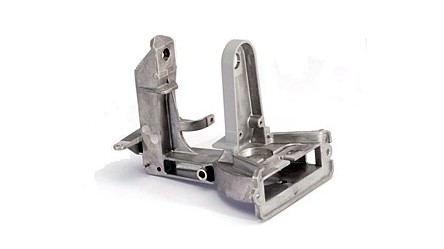
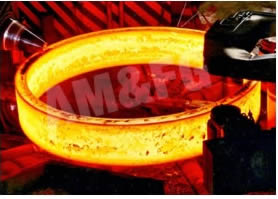
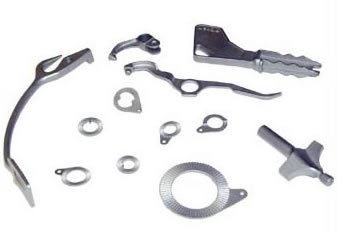
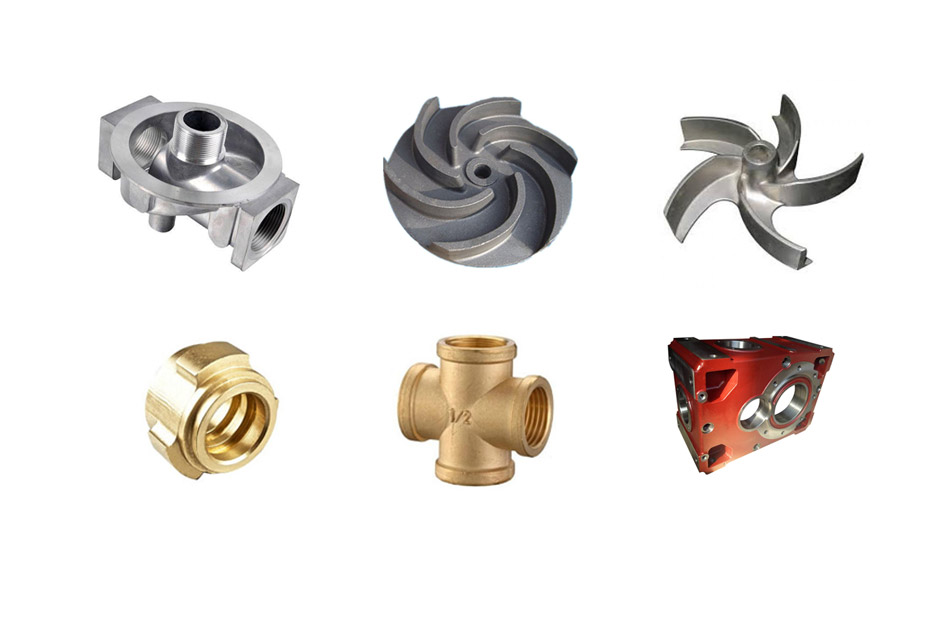

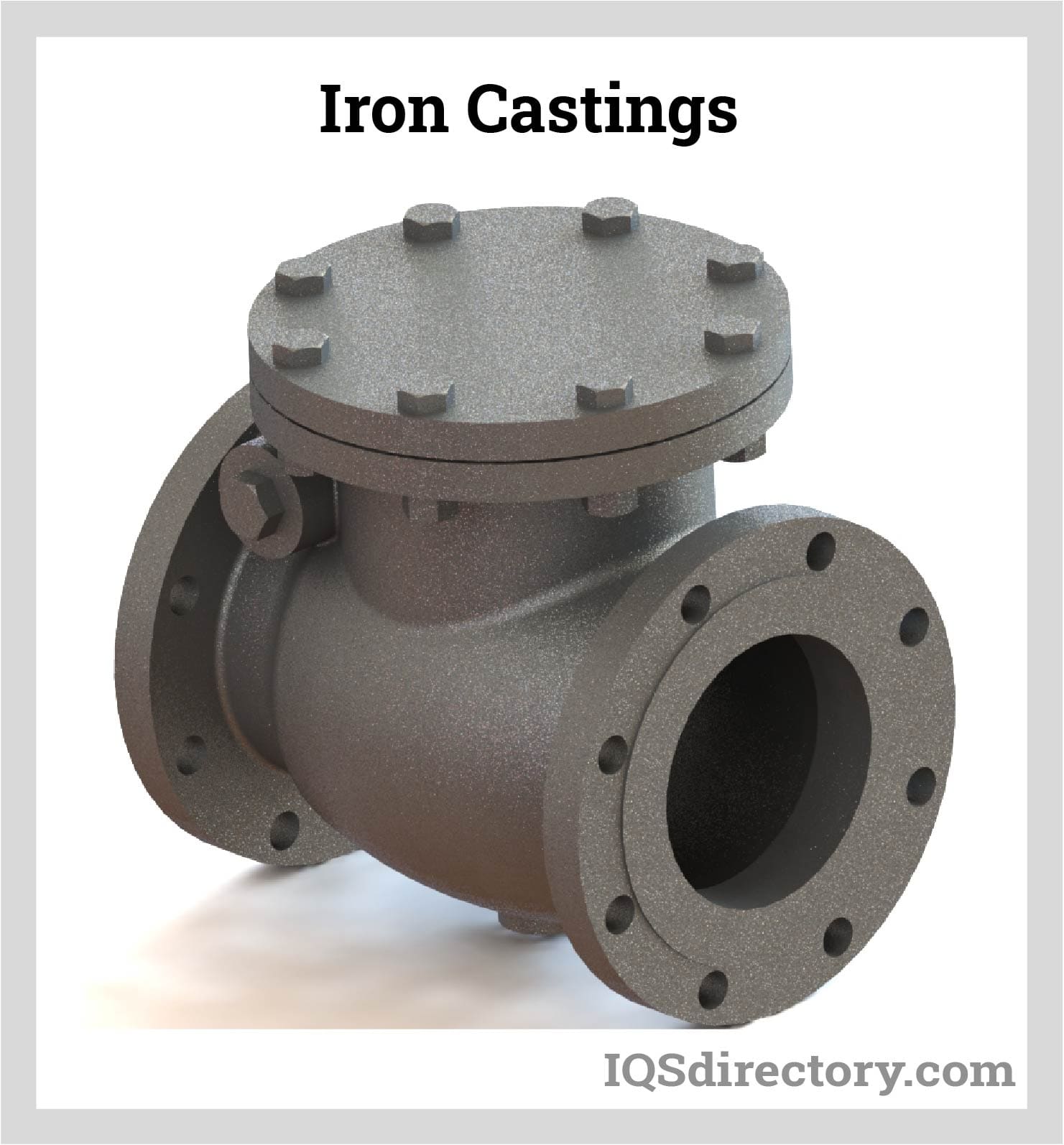
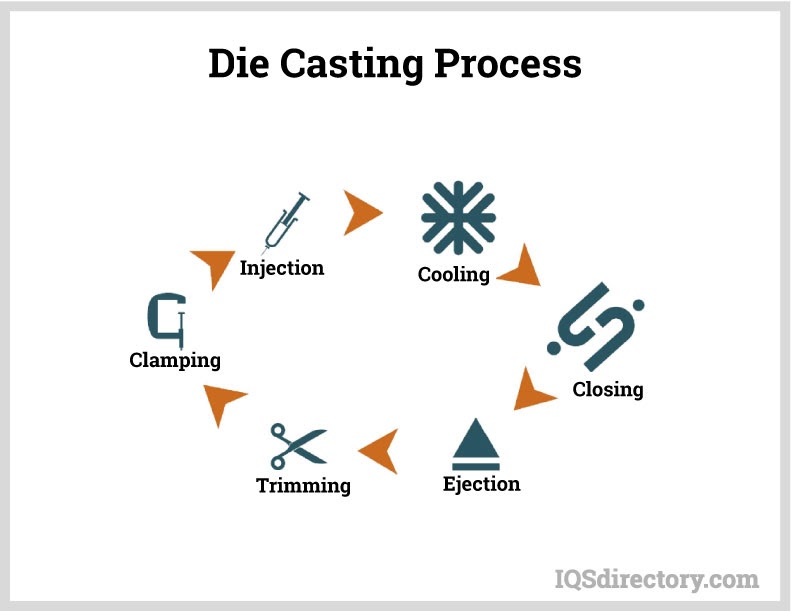

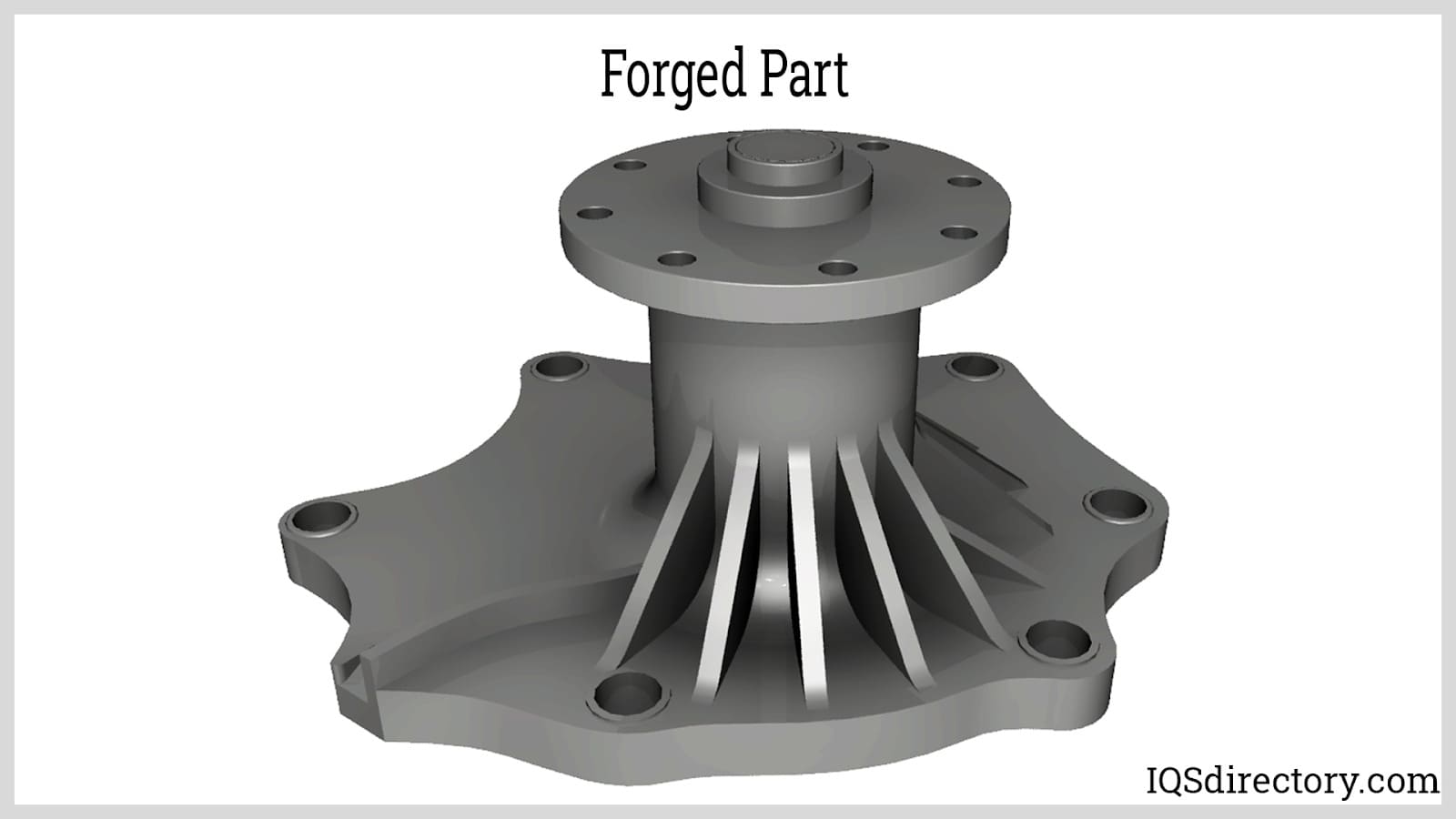
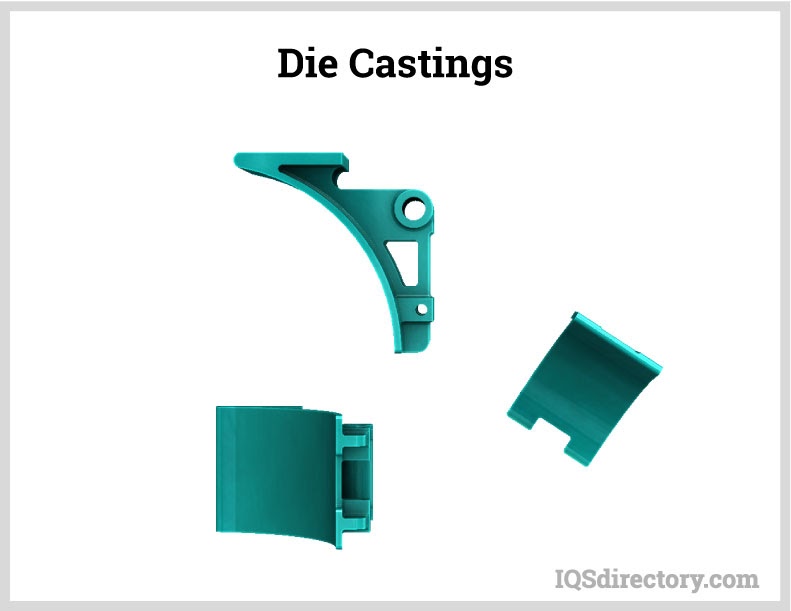
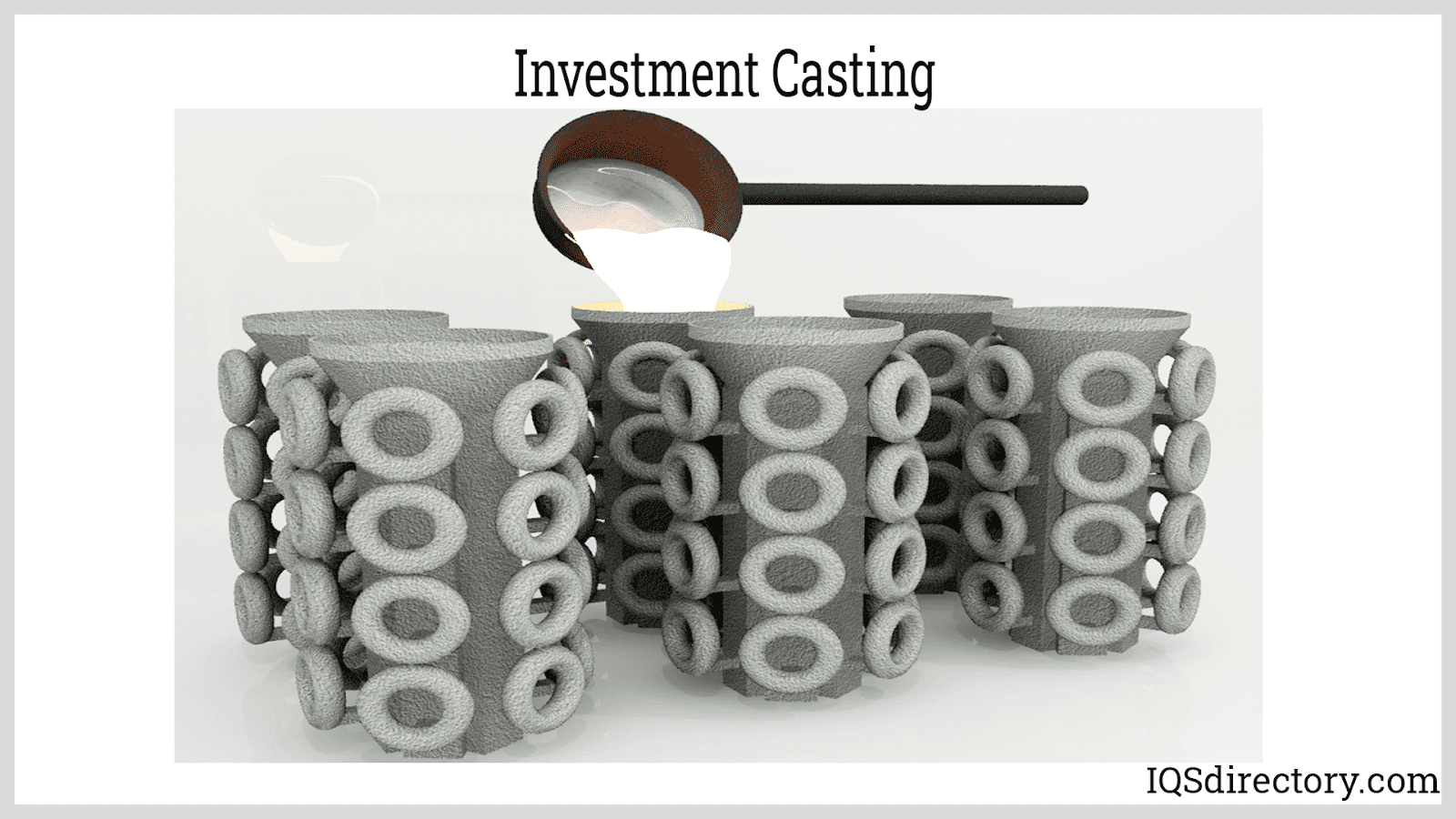
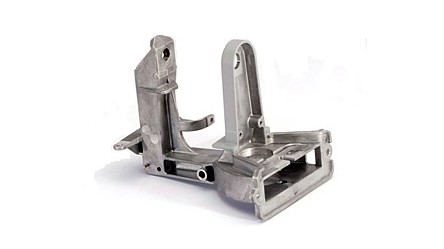 Die Castings
Die Castings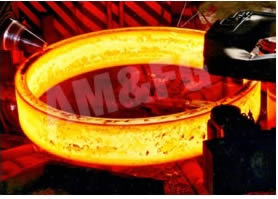 Forgings
Forgings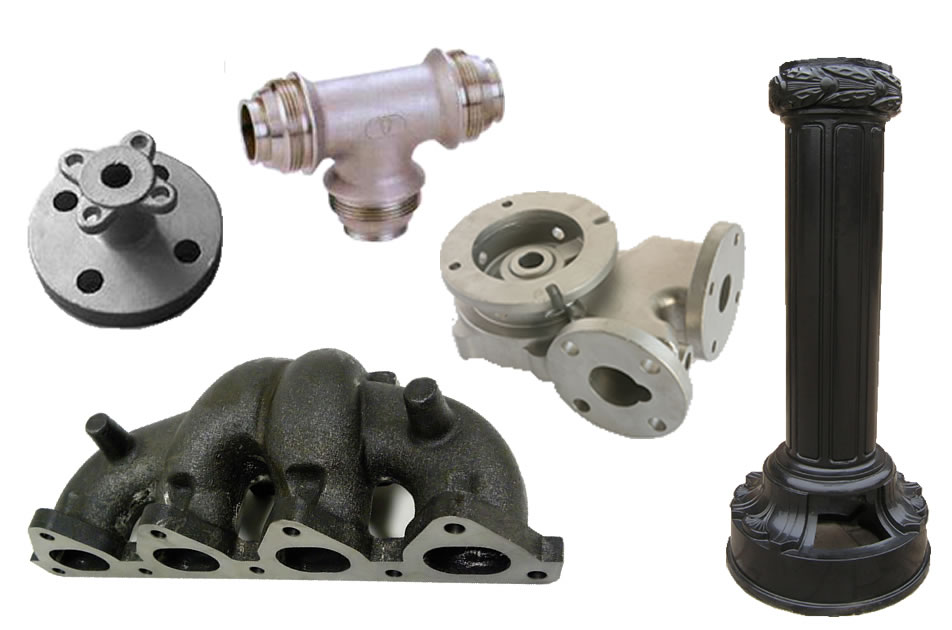 Grey Iron Castings
Grey Iron Castings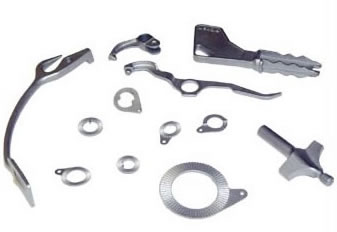 Investment Castings
Investment Castings Castings & Forgings
Castings & Forgings Bulk Material Handling
Bulk Material Handling Electrical & Electronic Components
Electrical & Electronic Components Flow Instrumentation
Flow Instrumentation Hardware
Hardware Material Handling Equipment
Material Handling Equipment Metal Cutting Services
Metal Cutting Services Metal Forming Services
Metal Forming Services Metal Suppliers
Metal Suppliers Motion Control Products
Motion Control Products Plant & Facility Equipment
Plant & Facility Equipment Plant & Facility Supplies
Plant & Facility Supplies Plastic Molding Processes
Plastic Molding Processes Pumps & Valves
Pumps & Valves Recycling Equipment
Recycling Equipment Rubber Products & Services
Rubber Products & Services